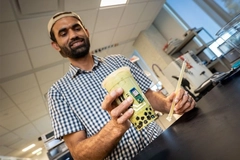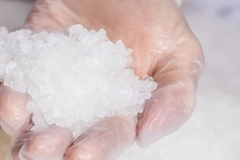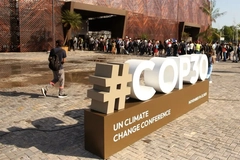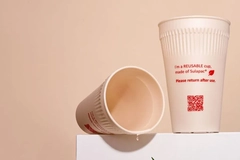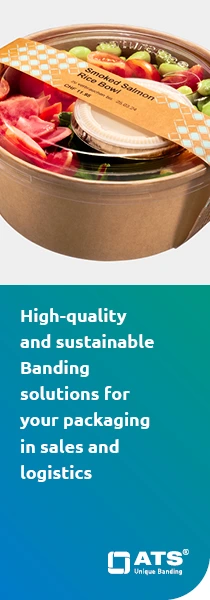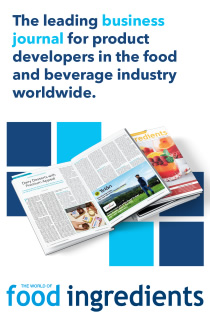Global packaging evolution: Beyond sustainability in the F&B industry
Explore how safety, usability, and transparency demands drive packaging innovation worldwide

Packaging plays a crucial role in the food and beverage industry by protecting products, ensuring freshness, and enhancing convenience. It can also guarantee product safety while providing a platform for transparency and engagement.
Innova Market Insights’ Innova360 research into global packaging trends analyzes technology advancements and highlights the role of smart labels, Modified Atmosphere Packaging (MAP), and innovative materials in shaping the packaging industry. The research also explores the packaging industry’s future focuses and uncovers where brands can leverage opportunities in this market.
Consumer packaging preferences
Product quality and nutrition are increasingly critical values for consumers when considering F&B brands. Food quality preservation, easy storage, and enhanced shelf life are the packaging functions that influence consumer decisions the most.
Willingness to pay a premium for functional packaging decreased from 64% to 52% in the past year. Still, most global consumers prioritize functional packaging that preserves food quality, ensures protection and safety, and extends shelf life despite rising food prices.
In meat and dairy products, packaging is vital for maintaining product quality and safety, while the top concern for snacks and beverages is convenience.
Besides protecting the food inside the package, convenience and label information remain essential across all food and beverage categories.
Preserving product quality is the leading consumer concern for all beverage types except carbonated soft drinks.
Glass ranks highest in packaging types, checking all the boxes for food safety, product protection, design, and personalization.
Global packaging trends reveal consumers prefer plastic and paper packaging for shelf-stable products, while biodegradable plastics and bioplastics are opted for refrigerated/frozen items. Half of consumers are willing to pay a premium for added-value packaging like extended shelf life.
Half of consumers are willing to pay a premium for added-value packaging like extended shelf life.
Product protection and safety trends
Many consumers are familiar with top packaging innovations, including recyclable packaging, vacuum skin packaging, and tamper-evident packaging. Interest in edible packaging, self-heating and cooling formats, and built-in freshness sensors is growing globally.
Manufacturers are leaning toward MAP, barrier coating, and tamper-resistant packaging for product protection and safety.
Gurmepack Iskembe Corbasi Tripe Soup uses MAP technology to preserve freshness, while Flipkart Indie Flavors Mini Samosa uses nitrogen packaging.
Globally, plastics are commonly used for food and beverage packaging, while aluminum displays the strongest uptake growth.
Convenience and usability trends
Convenience follows quality and safety in consumer packaging priorities. Consumers globally seek packages that are easy to store, open, use on-the-go, and handle efficiently.
Asian countries offer self-heating meals, increasing the usability of packaging. Some 24% of consumers are familiar with self-heating and/or cooling packages, while 38% show interest in this technology.
Aventura Self Heating Vistienos Sriuba Su Kariu: Curry Chicken Soup warms up in three minutes using an exothermic reaction without the need for electricity.
Traceability and nutritional transparency
Global packaging trends show that consumers increasingly use digital technologies to access product information. QR codes, inclusive codes, and smart labels are top technologies for accessing nutrition, sustainability, and transparency/traceability information.
Consumers are familiar with QR codes, while interest grows for smart labels, inclusive codes, and touchcodes.
Brands continue implementing front-of-package nutrition labeling policies. More countries, including the US, India, and South Africa, require nutrition warning labels and actively develop policies for them.
Consumer engagement and brand identity
Oreo collaborated with Coca-Cola to launch limited edition products, Oreo Soda and Oreo Coca-Cola with Popping Candy, where consumers can scan QR and sync music with their friends on Spotify. These innovations act as a promotion and increase consumer engagement with brands.
Brand identities influence consumer purchasing decisions, including product identification, familiarity, and packaging material. Aluminum’s popularity grows but plastic remains the most used packaging material globally.
Aluminum’s popularity grows but plastic remains the most used packaging material globally.
What’s next in global packaging trends?
The global packaging industry balances innovation with sustainability, convenience, and consumer engagement. As technology integrates further into packaging, brands can leverage smart labels, interactive experiences, and transparency initiatives to build trust and deepen connections.
Global packaging trends show that brands can leverage connected packaging to engage consumers through QR codes, smart labels, and digital experiences. These features can enable ingredient tracing, brand storytelling, and interactive elements like contests, rewards, and augmented reality environments, fostering loyalty and deeper engagement.
Innovative packaging materials can continue to improve product protection without the challenges of traditional glass. MAP packaging can offer greater customization, replacing air with specific gas compositions tailored to individual product needs.
High-barrier coatings and bags can enhance defense against moisture, oxygen, and contaminants, while tamper-resistant features can reinforce consumer confidence in product integrity.
Regulatory shifts can lead to more mandatory front-of-package label policies worldwide, increasing transparency.
Additionally, packaging sizes and ergonomic features can adapt to evolving demographics, supporting the aging population with user-friendly designs.
Brands that use packaging refreshes and rebrands to communicate values and meet labeling requirements will likely strengthen consumer connections.
This article is based on the Innova Market Insights report, “Global Packaging Trends: Beyond Sustainability in Food & Beverage.”

